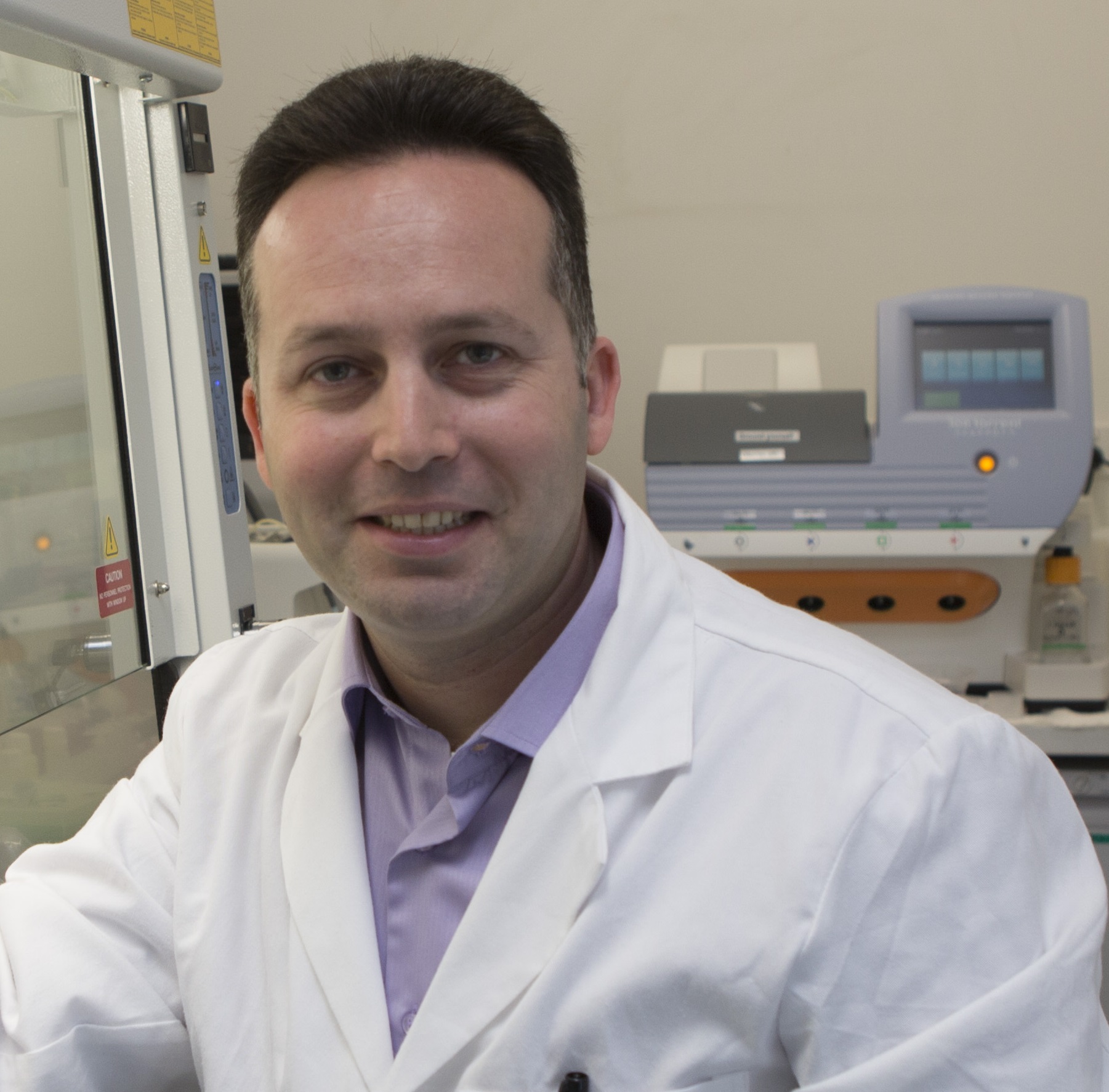Mark Barash, Ph.D.
 Associate Professor,
Associate Professor,
Forensic Science Coordinator
Ph.D., Bond University; Gold Coast, Australia
Contact Information:
Email: mark.barash@sjsu.edu
Phone: 408-924-5513
Office: HB 216
Spring 2025 Office Hours:
Mon and Tue 4pm-5pm via Zoom drop in
About Dr. Mark Barash:
Dr. Barash is an enthusiastic advocate of forensic science and criminal justice with over 22 years of professional experience in the Forensic DNA field, including 10 years of operational experience as a DNA Reporting Police Officer in Israel Police. During his Police career, he contributed to hundreds of criminal investigations by analyzing biological evidence from armed robberies, sexual assaults, homicides, and terrorist attacks.
Dr. Barash's research interests span multidisciplinary areas such as craniofacial genetics, anthropology, biometrics, bioinformatics, machine learning, forensic genealogy, indirect DNA transfer, and applications of massively parallel sequencing. Mark's primary research focuses on building innovative forensic intelligence tools for the prediction of externally visible characteristics such as facial appearance and other visible traits of potential investigative value from a DNA sample.
Dr. Barash strongly believes in the importance of criminal justice principles, which led him to establish a forensic consulting company, “GATACA.” Via his company, he provides independent expert consulting in criminal and civil cases for private and legal enforcement customers, mostly pro bono.
Students who are interested in joining the lab should email Dr. Barash a short note outlining their interest along with an unofficial transcript and resume/CV. Students who are accepted must commit to a minimum of two semesters. Students can expect to spend between 8 and 12 hours per week on research activities such as lab maintenance, lab meetings, setting up experiments, data analysis, creating presentations, etc.
Watch Dr. Barash presentation "Unlocking Justice: The AI Revolution in Forensic Science" at the Human Identification Solutions (HIDS) 2024 online conference: https://www.thermofisher.com/us/en/home/about-us/events/life-science/hids.html or via direct link: https://drive.google.com/file/d/1-yJBTLrsOnPsI1quu7oVhSEym3SBqlBP/view?usp=sharing
Google citations profile
Recent Publications:
McNevin, D.; Barash, M. Comparison of Likelihood Ratios from Probabilistic Genotyping for Two-Person Mixtures across Different Assays and Instruments. Forensic Sci. 2024, 4, 441-452. https://doi.org/10.3390/forensicsci4030028
Listen to the AI-generated podcast for this article!
Giverts, P., Sorokina, K., Barash, M., & Fedorenko, V. The use of machine learning for the determination of a type/model of firearms by the characteristics on cartridge cases. Forensic Science International, (2024) 112021.
Listen to the AI-generated podcast for this article!
Barash M., McNevin D., Fedorenko V., Givers P. Machine learning applications in forensic DNA profiling: a critical review. Forensic Science International – Genetics, 69, (2024). doi: 10.1016/j.fsigen.2023.102994
Listen to the AI-generated podcast for this article!
N. Pandkar, T.-S. Moh and M. Barash, "3D Facial Biometric Verification Using a DNA Sample for Law Enforcement Applications," 2022 IEEE/WIC/ACM International Joint Conference on Web Intelligence and Intelligent Agent Technology (WI-IAT), Niagara Falls, ON, Canada, 2022, pp. 715-722, doi: 10.1109/WI-IAT55865.2022.00114
Prasad E., Hitchcock, Raymond J., Cole A., Barash M., McNevin D., van Oorchot R.A.H. Touch DNA recovery from unfired and fired cartridges: Comparison of swabbing, tape lifting and soaking. Forensic Science International, 330, 111101, (2022). https://doi.org/10.1016/j.forsciint.2021.111101
McNevin D., Wright K., Barash M. Gomes S., Jamison A., Chaseling J., Proposed framework for comparison of continuous probabilistic genotyping systems amongst different laboratories. Forensic Sciences. 1(1), pp. 33-45, (2021). https://doi.org/10.3390/forensicsci1010006
Prasad E., Atwood L., van Oorchot R.A.H., McNevin D., Barash M., Raymond J., Trace DNA recovery rates from firearms and ammunition as revealed by casework data. Australian Journal of Forensic Science, pp. 1-16, (2021). https://doi.org/10.1080/00450618.2021.1939783
Prasad E., Atwood L., van Oorchot R.A.H., McNevin D., Barash M., Gunn P., Raymond J. Touch DNA recovery from unfired and fired cartridge cases: The comparative success rates of swabbing, taping, vacuum filtration and direct PCR. Forensic Science International. (2020) 317. doi.org/10.1016/j.forsciint.2020.110507
Wyner N., Barash M., McNevin D. Forensic autosomal short tandem repeats (STRs) and their potential association with phenotype. Frontiers in Genetics (2020) 11:884. doi:10.3389/fgene.2020.00884
Prasad E., Barash M., Hitchcock C., van Oorchot R.A.H., Raymond J., McNevin D., Gunn P. Evaluation of soaking to recover trace DNA from fired cartridge cases. Australian Journal of Forensic Science, Vol. 53:5, pp.512-522, (2020). doi.org/10.1080/00450618.2020.1757758
McNevin D., Wright K., Chaseling J., Barash M. Commentary on: Bright et al. (2018) Internal validation of STRmix™ – A multi laboratory response to PCAST, Forensic Science International: Genetics, 34: 11-24. Forensic Science International: Genetics. (2019) Jul;41:e14-e17. doi: 10.1016/j.fsigen.2019.03.016.
Walton A., Moret S., Gunn P., Barash M. The frequency of fingerprint patterns separated by ethnicity and sex in a general population from Sydney, Australia. Australian Journal of Forensic Science. (2019), Vol. 51. doi.org/10.1080/00450618.2019.1569153
Prasad E, Van der Walt L, Cole A, van Oorschot RAH, Barash M, Gunn P, Raymond J. The effects of soaking for DNA recovery on the striation patterns of fired cartridge cases. Australian Journal of Forensic Science. (2019), Vol. 51. doi.org/10.1080/00450618.2019.1569144.
Phan. K., Barash M., Spindler X., Gunn P., Roux C. Retrieving forensic information about the donor through bacterial profiling. International Journal of Legal Medicine. (2019), 1-9. doi.org/10.1007/s00414-019-02069-2.
Wai K.T., Gunn P. Barash M., MitoQuant: Development of the MitoQ assay as a real-time quantification of mitochondrial DNA in degraded samples. International Journal of Legal Medicine. (2019), Vol. 133:2, 411-417. doi: 10.1007/s00414-018-1956-8
Ruan T., Barash M., Gunn P., Bruce D. Investigation of DNA transfer onto clothing during regular daily activities. International Journal of Legal Medicine. 132(4):1035-1042, (2018). DOI:10.1007/s00414-017-1736-x
Barash M., Bayer P. E., van Daal A. Identification of the Single Nucleotide Polymorphisms Affecting Normal Phenotypic Variability in Human Craniofacial Morphology Using Candidate Gene Approach. Journal of Genetics and Genome Research. Vol 5:1, (2018). DOI: 10.23937/2378-3648/1410041
Voskoboinik A., Amiel M., Reshef A., Gafny R., Barash M. Laundry in a washing machine as a mediator of secondary and tertiary DNA transfer. International Journal of Legal Medicine, 132 (2), 373-378, (2018)